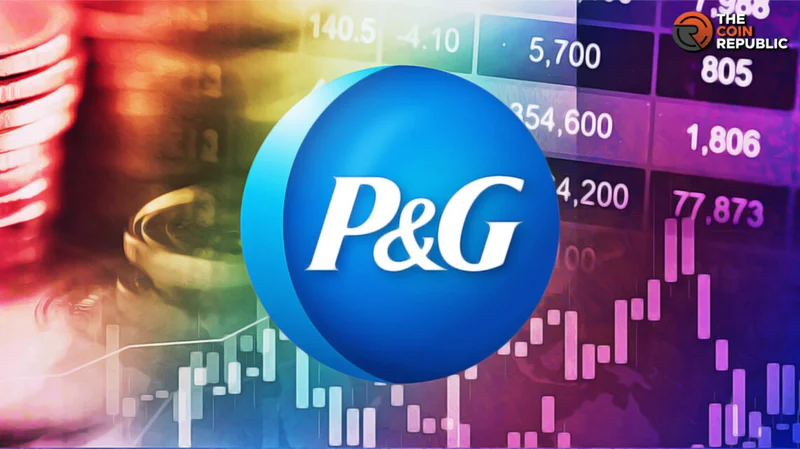So, Procter & Gamble is up. A whole 0.8%.
I want you to picture the scene. Some junior analyst in a stuffy Midtown office, eyes bloodshot from staring at charts, sees the ticker flash green. PG is trading at $152.39. He slams his fist on the desk—not in anger, but in what passes for joy on Wall Street these days. "We're back!" he screams to an empty room, because everyone else is out getting a $20 salad.
Give me a break.
The market’s reaction to P&G’s latest earnings report is a perfect, beautiful, almost poetic example of how completely detached from reality we’ve become. The company beats expectations slightly, thanks to people still buying ridiculously overpriced razors and laundry detergent, and suddenly the options market lights up like a Christmas tree in a fireworks factory. We're talking five times the usual trading volume. Twenty-two thousand call options traded. It’s a feeding frenzy.
And what are these financial geniuses betting on? The most popular contract was a call option with a $160 strike price. Let me translate that for you: thousands of people, using real money, placed a bet that a stock sitting at $152—a stock that was scraping a 52-week low just over a week ago—was going to rocket past $160 that same day. This isn't investing. This is pulling the lever on a slot machine in a casino that’s on fire. What, exactly, did they see in a minor earnings beat that screamed "imminent 5% surge"? Is there some secret ingredient in Tide Pods I don't know about?
Let's dig into the "sentiment," because that's where the real dark comedy is. The numbers guys will point to the data with a straight face. They’ll tell you the 50-day call/put volume ratio is at 2.49, sitting in the 74th percentile of its annual range. They’ll whisper about the Schaeffer's put/call open interest ratio (SOIR) being at 0.40, a level of optimism so high it’s in the 2nd percentile of its yearly readings.

They present these numbers like they're evidence of a rational market making a sound judgment, a market where Bulls Flock to Procter & Gamble Stock After Upbeat Results. They are not. This is the statistical equivalent of a crowd’s roar. It’s loud, it’s emotional, but it ain't a sign of intelligence. All it tells me is that a massive number of people are desperately chasing momentum, piling onto a stock because it wiggled up for a third consecutive day. This is a bad idea. No, 'bad' doesn't cover it—this is a five-alarm dumpster fire of groupthink.
The whole thing feels like watching someone celebrate finding a single, stale cracker after being lost in the desert for a month. Yes, it’s technically sustenance. But it’s not a feast, and you’re still in the middle of a desert. The desert, in this case, is the fact that P&G’s stock is still down nearly 9% for the year. It just bounced off its lowest point in 52 weeks on October 13. We're supposed to be impressed that it clawed its way back over its 80-day moving average? That’s not a sign of strength; that’s the twitching of a corpse.
And the reason for the "beat"? Strong demand for beauty products. Offcourse. Because when the economy feels like it’s teetering on a cliff, the one thing you can count on is people buying cosmetics to look good for the apocalypse. It’s the illusion of control in a world spinning out of it, and P&G is just the company selling the paint. Then they trot out the line about expecting "less of a tariff impact" next year. What does that even mean? It’s a corporate séance, trying to divine the future from vague pronouncements. It’s meaningless fluff designed to calm the nerves of people who were already looking for a reason to feel calm.
I swear, the bar for success has gotten so low it's a tripping hazard in hell. A company that sells products people are practically forced to buy—soap, toothpaste, toilet paper—manages to not completely fall apart, and we treat it like the second coming of Steve Jobs. P&G isn't innovating; it's just existing. It's a giant, lumbering beast that has mastered the art of charging you more for the same blue liquid in a slightly redesigned bottle.
And the market rewards it. The traders, with their twitchy fingers and FOMO-addled brains, see a flicker of green and just...pounce. They don’t see the 9% year-to-date hole in the ship’s hull. They don’t see the 52-week low from last Tuesday. They just see a stock that went up yesterday and the day before, and their primate brains tell them it must go up tomorrow, too.
This isn’t about P&G, not really. It’s about the sickness in the system. A system that celebrates a 0.8% bump as a monumental victory while ignoring the long-term decay. A system where gambling on short-term options is mistaken for a sound financial strategy. It’s a frantic, desperate search for any piece of good news, no matter how small or misleading, to keep the party going for one more night. But what happens when the sun comes up and we realize the cracker is gone and we’re still thirsty?
Let's be brutally honest. This isn't a comeback story. It's a dead cat bounce wearing a nice suit. The market is so starved for good news that it's hallucinating an oasis. All this breathless optimism and frantic options-buying over a legacy company barely keeping its head above water is a symptom of a deeply unhealthy, speculative fever. People aren't investing in Procter & Gamble's bright future; they're just betting the roulette wheel lands on green one more time before the whole casino collapses.